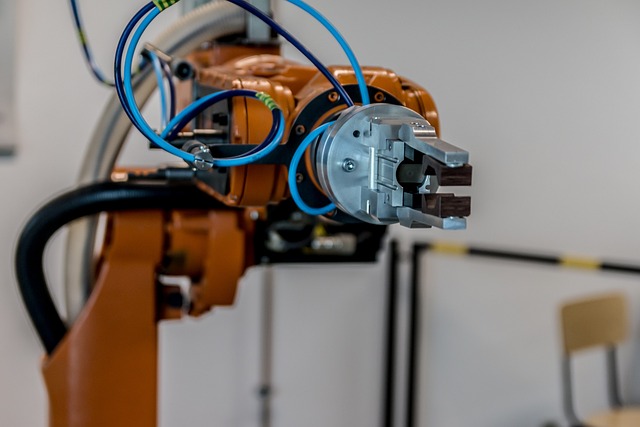One of the most exciting technological advancements is the integration of robotics with the Internet of Things (IoT). IoT allows for real-time data sharing between devices and robotics systems, creating smarter, more responsive automation solutions.
However, this integration introduces significant data management challenges that you, as an integrator, must overcome to ensure success. In this article, we’ll walk through data management challenges when integrating robotics with IoT and the solutions available to tackle them.
Understanding the complexity of IoT-enabled robotics
When you merge robotics with IoT systems, you create a complex web of data points, devices, and communication protocols that must all function together seamlessly. Robots generate massive amounts of data during operation, which needs to be analyzed and acted upon in real time to optimize performance.
IoT devices such as sensors, cameras, and tracking systems feed the robots with data about the environment, while robots, in turn, send back data about their status and efficiency.
The sheer volume of data from IoT and robotics can overwhelm traditional systems. For example, a single robot in a smart factory could generate thousands of data points every second, monitoring everything from motor performance to energy consumption.
When you scale this across multiple robots and IoT devices, you’re looking at terabytes or even petabytes of data flowing through the network. Managing this data—ensuring it’s stored, processed, and analyzed correctly—is no easy feat.
Data overload: The key challenges
The first challenge you’ll face is **data overload**. With so many devices interconnected, the data flow can quickly become unmanageable. Even with advanced networking technologies, data bottlenecks can occur, especially when processing and analyzing data in real-time.
You must design systems that can handle high throughput and distribute processing across devices, reducing latency and improving responsiveness.
*Security is a critical concern. With IoT systems, there are more entry points for potential cyberattacks. Each connected device could be a vulnerability that hackers might exploit to access sensitive information or manipulate the robotics system.
Data security protocols such as encryption, secure authentication, and continuous monitoring must be baked into your systems from the outset to minimize the risks of breaches. IoT devices and robots must be regularly updated with the latest security patches to defend against evolving threats.
Data storage and processing solutions
Once you’ve overcome the challenges of data collection and security, the next big hurdle is data storage and processing.
Given the enormous volumes of data generated by IoT-enabled robotics, traditional storage systems may not be sufficient. You’ll need to consider a combination of edge computing and cloud storage solutions.
Edge computing allows data to be processed closer to where it’s generated, reducing the amount of data sent back to centralized servers and cutting down on latency. For instance, instead of sending every piece of data a robot generates to the cloud, edge computing processes the most critical data locally on the robot or a nearby device.
This leads to faster decision-making and can greatly reduce bandwidth usage. However, edge computing alone won’t solve all your problems. You’ll still need robust cloud storage systems for long-term data storage, analysis, and historical records.
Cloud platforms provide scalable solutions that can accommodate massive amounts of data while offering tools for real-time analysis and machine learning integration.
By leveraging a hybrid approach of edge computing and cloud storage, you can optimize both data processing speed and storage efficiency.
Managing interoperability and data standardization
Not all devices speak the same language, and integrating multiple devices from different manufacturers can be tricky. For your systems to work effectively, you must ensure that data protocols are standardized.
This means adopting common communication standards such as MQTT, OPC UA, or CoAP, which are designed to enable smooth data exchange between IoT devices and robots.
Data standardization is crucial for interoperability and data analytics. If different devices provide data in different formats, it will be challenging to analyze that data cohesively.
By adopting standardized formats and ensuring that all devices are compatible with these standards, you can streamline your data management and ensure that everything from your robots to your sensors communicates clearly.
In addition, middleware solutions can help bridge the gap between different IoT devices and robotic systems. Middleware acts as an intermediary, translating and formatting data between different systems so that it’s usable regardless of the device or platform.
As an integrator, you must explore middleware options that suit your specific environment and use case to ensure seamless integration and data flow.
How to overcome the data management challenges of IoT-enabled robotics
As a robotics integrator, IoT integration opens new frontiers for automation, data analysis, and operational efficiency. However, it also presents significant challenges in data management that cannot be ignored.
From data overload and storage to security and interoperability, you’ll need to plan and implement solutions that address these issues carefully. Leveraging edge computing, cloud storage, and standardized communication protocols can reduce latency, optimize data storage, and ensure real-time decision-making capabilities.
Security measures such as encryption and secure authentication are essential to protect sensitive data and ensure the safety of your systems.
Meanwhile, adopting middleware and data standardization practices will allow different IoT and robotic systems to communicate seamlessly. Ultimately, integrating these systems will help you keep customers and gain new ones.











Leave a Reply